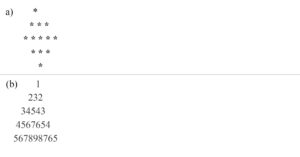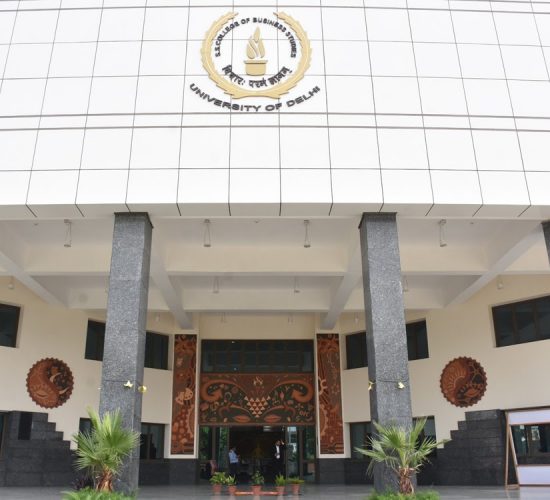Grade "A+" Accredited by NAAC with a CGPA of 3.46
This course is designed to introduce the student to the basics of programming using Python. The course covers the topics essential for developing well documented modular programs using different instructions and built-in data structures available in Python.
At the end of the course, students should be able to:
Unit 1
Introduction to Programming using Python: Structure of a Python Program, Functions, Interpreter shell, Indentation. Identifiers and keywords, Literals, Strings, Basic operators (Arithmetic operator, Relational operator, Logical or Boolean operator, Assignment Operator, Bit wise operator).
Unit 2
Building blocks of Python: Standard libraries in Python, notion of class, object and method.
Unit 3
Creating Python Programs: Input and Output Statements, Control statements:-branching, looping, Exit function, break, continue and pass, mutable and immutable structures. Testing and debugging a program.
Unit 4
Built-in data structures: Strings, lists, Sets, Tuples and Dictionary and associated operations. Basic searching and sorting methods using iteration and recursion.
Unit 5
Visualization using 2D and 3D graphics: Visualization using graphical objects like Point, Line, Histogram, Sine and Cosine Curve, 3D objects.
Unit 6
Exception Handling and File Handling: Reading and writing text and structured files, Errors and Exceptions.

Downey, A.B., (2015), Think Python–How to think like a Computer Scientist, 3rd edition. O’Reilly Media.
Taneja, S. & Kumar, N., (2017), Python Programming- A Modular Approach. Pearson Education.
Brown, M. C. (2001). The Complete Reference: Python, McGraw Hill Education.
Dromey, R. G. (2006), How to Solve it by Computer, Pearson Education.
Guttag, J.V.(2016), Introduction to computation and programming using Python. MIT Press.
Liang, Y.D. (2013), Introduction to programming using Python. Pearson Education.
Use of ICT tools in conjunction with traditional class room teaching methods
Interactive sessions
Class discussions
Mini projects in the laboratory
Written tests, assignments, quizzes, presentations as announced by the instructor in the class
Python Program, Control structure, Decision making, Functions, Strings, Lists, Dictionary.
Disclaimer: Details on this page are subject to change as per University of Delhi guidelines. For latest update in this regard please refer to the University of Delhi website here.
| Cookie | Duration | Description |
|---|---|---|
| cookielawinfo-checkbox-analytics | 11 months | This cookie is set by GDPR Cookie Consent plugin. The cookie is used to store the user consent for the cookies in the category "Analytics". |
| cookielawinfo-checkbox-functional | 11 months | The cookie is set by GDPR cookie consent to record the user consent for the cookies in the category "Functional". |
| cookielawinfo-checkbox-necessary | 11 months | This cookie is set by GDPR Cookie Consent plugin. The cookies is used to store the user consent for the cookies in the category "Necessary". |
| cookielawinfo-checkbox-others | 11 months | This cookie is set by GDPR Cookie Consent plugin. The cookie is used to store the user consent for the cookies in the category "Other. |
| cookielawinfo-checkbox-performance | 11 months | This cookie is set by GDPR Cookie Consent plugin. The cookie is used to store the user consent for the cookies in the category "Performance". |
| viewed_cookie_policy | 11 months | The cookie is set by the GDPR Cookie Consent plugin and is used to store whether or not user has consented to the use of cookies. It does not store any personal data. |

